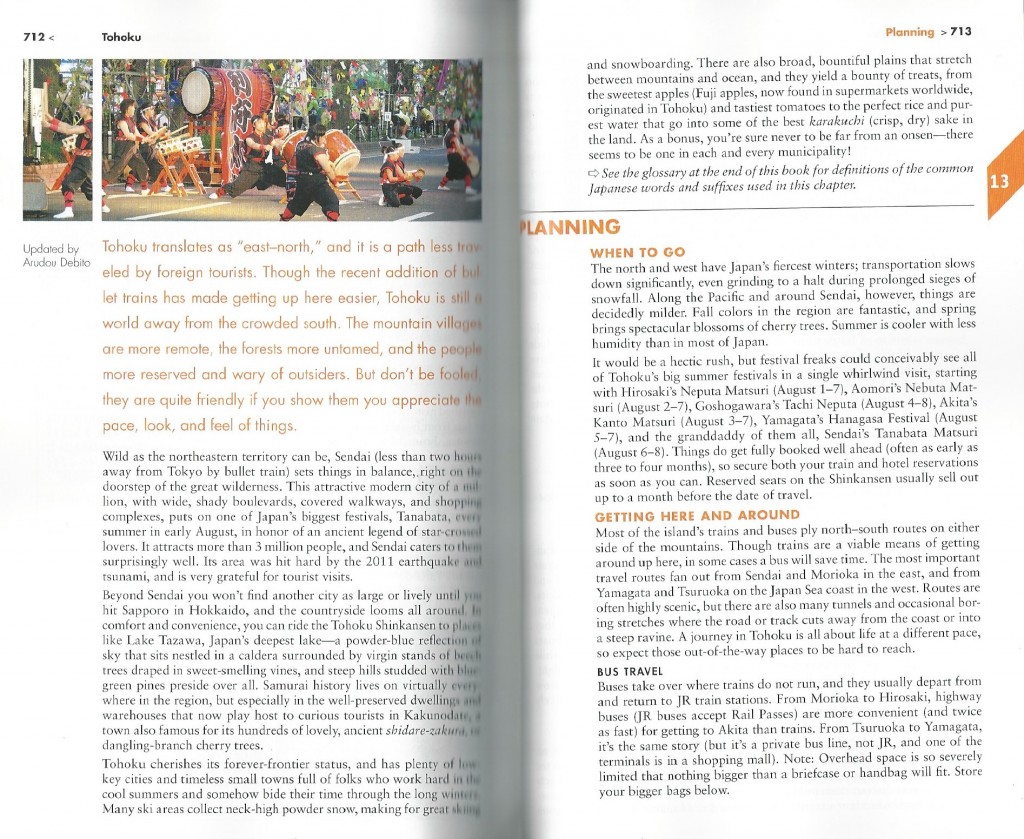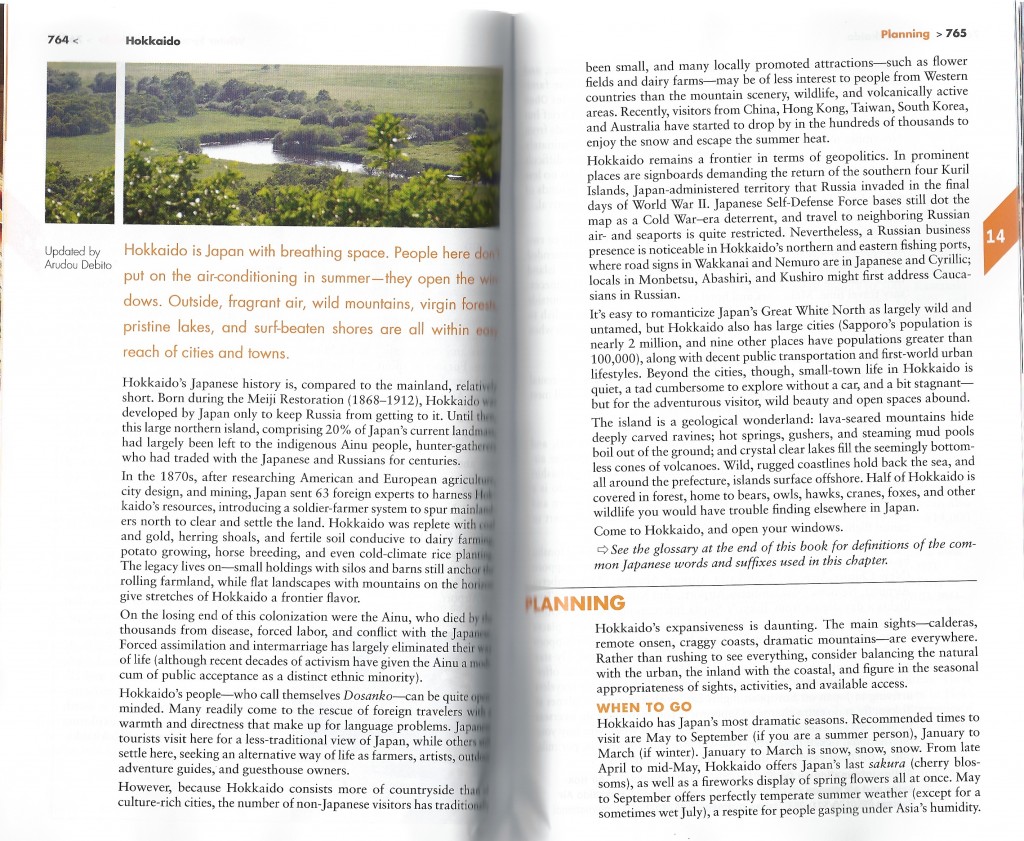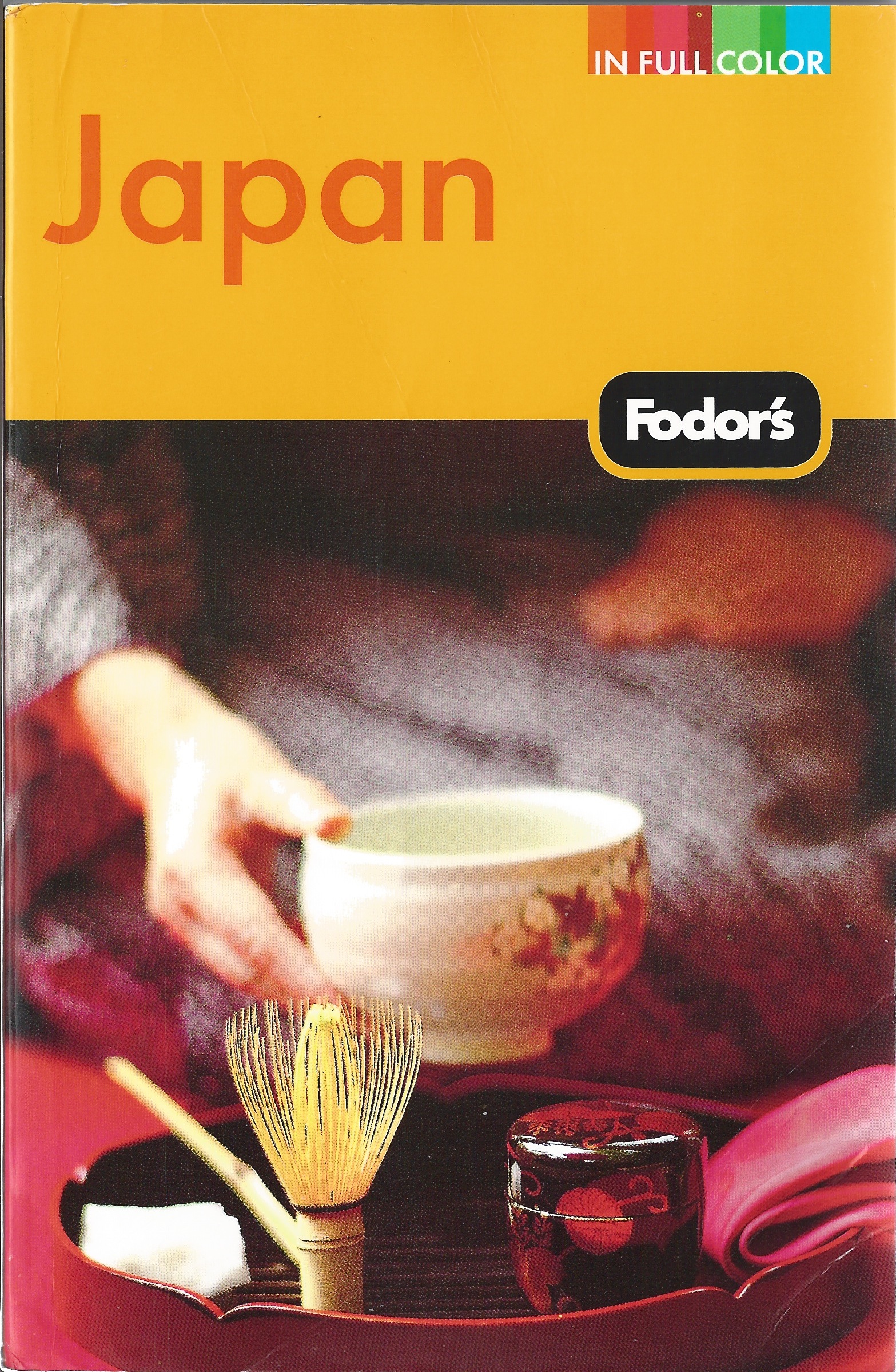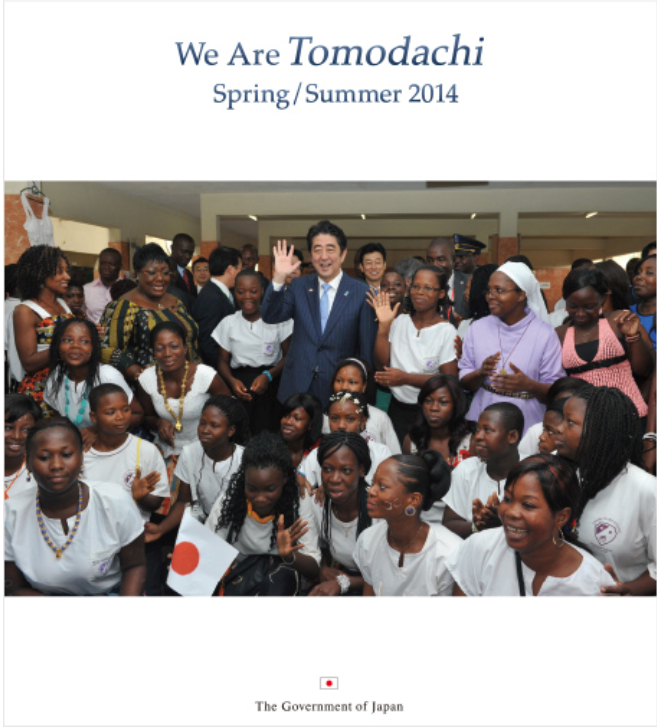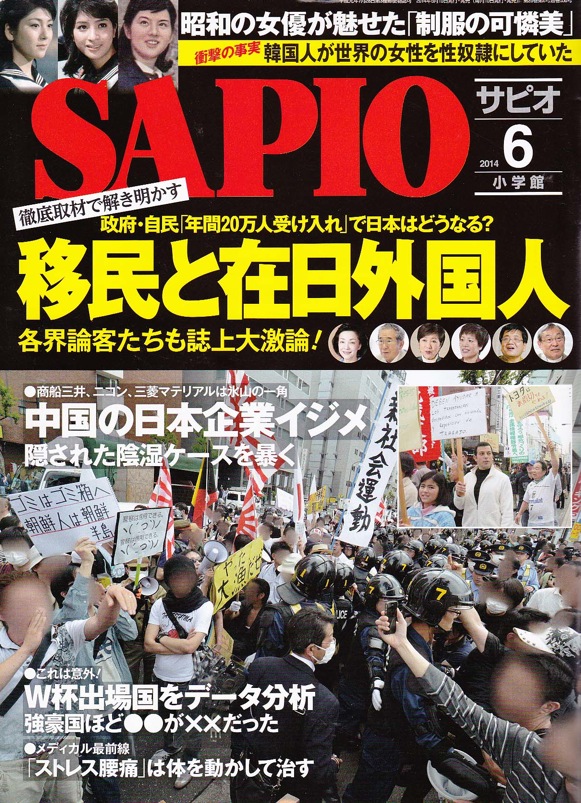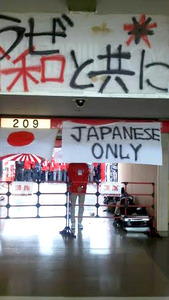mytest
eBooks, Books, and more from ARUDOU, Debito (click on icon):
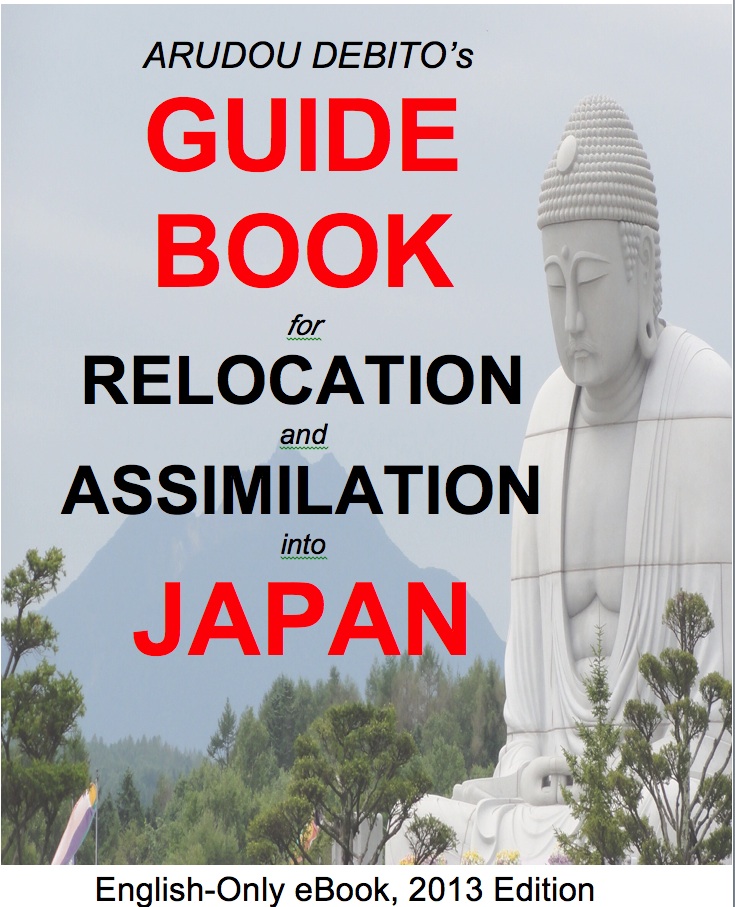
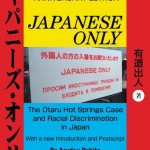
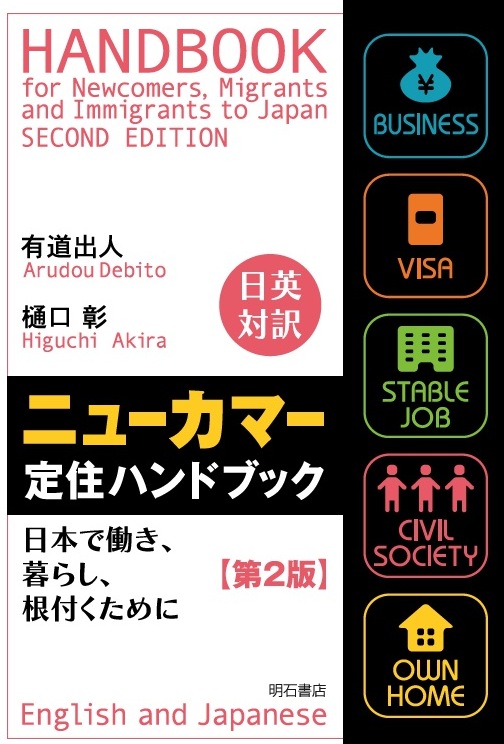


![]()


UPDATES ON TWITTER: arudoudebito
DEBITO.ORG PODCASTS on iTunes, subscribe free
“LIKE” US on Facebook at http://www.facebook.com/debitoorg
http://www.facebook.com/handbookimmigrants
https://www.facebook.com/JapaneseOnlyTheBook
https://www.facebook.com/BookInAppropriate
If you like what you read and discuss on Debito.org, please consider helping us stop hackers and defray maintenance costs with a little donation via my webhoster:

All donations go towards website costs only. Thanks for your support!
Hi Blog. Debito.org Reader JK offers the following links and commentary about two important subjects: 1) The unwillingness of Japan’s media to count NJ as “residents” in official population tallies (despite NJ inclusion on the juumin kihon daichou Resident Registry since 2012), and 2) the widespread misogyny in Japan’s policymaking arenas that has no recourse but to appeal to pressure from the outside world (gaiatsu) for assistance (as NJ minorities clearly also must do).
Speaking to the first point in particular (since it is more within Debito.org’s purview): Before we even touch upon the lousy demographic science, how insulting for NJ once again to simply “not count” as part of Japan’s population.
Some J-articles have minced words by qualifying the ethnically-cleansed statistic as “the population of Japanese people” (nihonjin no jinkou). But others (see the Nikkei below) simply render it as “Japan’s population” (nihon no jinkou). When they eventually get around to mentioning that NJ are also here, they render them as “nihon ni taizai suru gaikokujin” (NJ “staying” in Japan, as opposed to zaijuu “residing”). How immensely arrogant and unappreciative of all that NJ residents do for Japan! Dr. ARUDOU, Debito
=================================
JK: Hi Debito. Passing along some links regarding Japan’s ongoing population decline. I’ll comment afterwards.
//////////////////////////////////////////////////////////////////
Population drops for fifth year as migration to cities continues
Yomiuri Shinbun, June 25, 2014
http://the-japan-news.com/news/article/0001380919
Jiji Press: Japan’s population on Jan. 1 of this year was down 0.19 percent from a year before at 126,434,964, falling for the fifth straight year, the internal affairs ministry said Wednesday.
The figure was calculated based on Japan’s resident registry network system and does not include foreign residents.
While the number of births in 2013 edged up 955 from the previous year to 1,030,388, the number of deaths reached a record high of 1,267,838.
As a result, the natural population decline, or the number by which deaths exceed births, stood at 237,450, the highest on record. Japan’s population marked a natural decline for the seventh consecutive year.
The number of foreign residents in Japan stood at 2,003,384 as of Jan. 1 this year, down 0.12 percent from a year earlier. Since July 2012, the resident registry network system has also handled foreign resident registration.
The population in Japan including foreign residents came to 128,438,348.
Of the total Japanese population, people aged under 15 accounted for 13.04 percent, down 0.09 percentage point, while the productive-age population, or people aged 15-64, was 61.98 percent, down 0.49 point.
The proportion of people aged 65 or over rose 0.58 point to 24.98 percent, reflecting the aging of the society.
The Japanese population in the three major metropolitan areas of Tokyo, Nagoya and Kansai increased 44,276 to a record high of 64,394,619, demonstrating a tendency of the population concentrate in big cities, especially Tokyo.
Of Japan’s 47 prefectures, 39 saw their populations decline. The drop was especially steep in Akita, at 1.23 percent, Aomori, at 1.02 percent, and Yamagata, at 0.96 percent.
Fukushima Prefecture, home to Tokyo Electric Power Co.’s crippled Fukushima No. 1 nuclear power plant, saw its population fall at a slower pace of 0.72 percent. An official from the internal affairs ministry said the slowdown suggests that the impact of the nuclear accident has softened.
Eight prefectures experienced population growth, including Tokyo, at 0.53 percent, Okinawa, at 0.42 percent, and Aichi, at 0.16 percent.
Miyagi Prefecture in northeastern Japan saw a 0.06 percent increase apparently due to a rise in the number of people moving to the prefecture to take part in reconstruction work following the March 2011 earthquake and tsunami.
The average number of members per household for the whole of Japan stood at a record low of 2.30. The average was the lowest in Tokyo, at 1.97.
Japan’s population declines for 5th straight year
http://mainichi.jp/english/english/newsselect/news/20140626p2g00m0dm027000c.html
TOKYO (Kyodo) — Japan’s population stood at 126,434,964 on a resident register basis as of Jan. 1, down 243,684 from a year earlier and declining for the fifth straight year, amid a falling birthrate and a growing proportion of elderly people, government data showed Wednesday.
The number of deaths last year hit a record high of 1,267,838, while the number of births increased slightly to 1,030,388, according to the data released by the Ministry of Internal Affairs and Communications.
The number of the people aged 65 or older stood at 31,582,754 — the highest figure since 1994 when comparable data became available. The number of children aged 14 or younger stood at 16,489,385, the lowest figure since 1994.
Of the country’s 47 prefectures, 39 saw a decline in population. The population declined by 29,639 in Japan’s northernmost prefecture of Hokkaido, followed by Niigata Prefecture on the Sea of Japan coast and by Shizuoka Prefecture in central Japan. Akita Prefecture in northeastern Japan saw the largest rate of decline at 1.23 percent.
Miyagi, Saitama, Tokyo, Kanagawa, Aichi, Shiga, Fukuoka and Okinawa prefectures saw population increases, with Tokyo’s population growing 67,539, or 0.53 percent, the biggest increase among the eight prefectures.
Elderly people accounted for 24.98 percent of Japan’s population. By prefecture, the proportion was highest in Akita Prefecture at 31.23 percent and lowest in Okinawa Prefecture at 18.1 percent.
The number of foreign residents declined by 2,347 to 2,003,384, the data showed.
The population of Japanese and non-Japanese residents totaled 128,438,348.
June 26, 2014 (Mainichi Japan)
JK comments: What is the reason the population figure does not include NJ even though the resident registry network system has been able to account for NJ registration since 2012?
How it’s rendered in Japanese:
日本の人口、5年連続減 労働力の都市部集中強まる
日本経済新聞 2014/6/25 21:16
http://www.nikkei.com/article/DGXNASFS25015_V20C14A6MM8000/
総務省が25日発表した住民基本台帳に基づく1月1日時点の人口動態調査によると、日本人の総人口は1億2643万4964人で5年連続の減少となった。15~64歳の生産年齢人口は調査開始以来の最少を更新し、成長の押し下げ要因になる。人手不足の都市部に、景気回復の遅れが指摘される地方から働く世代が向かう傾向が強まり、地方では自治体の行政運営が難しさを増している。
調査期日は年度末移動の影響を避けるため3月末から1月に変更、増減は昨年1月と比べた。
日本人の総人口は前年より24万人減った。出生数はやや持ち直したが、死亡者数の増加が止まらず、自然減は7年連続。生産年齢人口は7836万人で総人口に占める割合は61.98%、65歳以上の老年人口は3158万人(同24.98%)だった。
三大都市圏に住む人は全人口の半数を超えて増え続けており、首都圏(東京、神奈川、千葉、埼玉)の人口は今年初めて3500万人を超えた。働き手が流入する首都圏は生産年齢人口の割合がなお高いが、65歳以上の割合も22.69%と前年3月末より0.55ポイント上昇、高齢化の足音が近づく。
人口が減ったのは39道府県で、秋田県と青森両県は減少率が1%を超えた。両県は増田寛也元総務相らが試算した「消滅の可能性がある」市町村の割合でも1、2位。増田氏は「東京の景気が先行して良くなると地方から人口が流出する。地方の景気回復が課題だ」と指摘する。
地方で人口減が続けば行政サービスの維持が難しくなる。秋田県は40年に今より30万人余り少ない70万人になるとの推計に基づき、地域や行政のあり方の再検討に着手。市町村とは電算システムや上下水道の維持管理の話し合いを始めた。青森県は3億円かけ結婚支援など27の人口減対策を進める。
市町村で人口減少率が高い市町村は6%を超える宮城県女川町、奈良県野迫川村、山梨県小菅村など全国に広がる。4番目に高い高知県大豊町は平均年齢が60歳を超え、年間の出生数は十数人。「集落の維持が難しい」として住民が担っていた道路の草刈りや側溝の掃除は町が臨時職員を雇って代行している。
日本人と3カ月を超えて日本に滞在する外国人を合わせた総人口は1億2843万8348人。そのうち外国人は200万人で、前年よりやや減少した。
In other news, have a look here:
Victim of sexist jeers tells foreign media more than one person responsible
Mainichi Shinbun June 25, 2014
http://mainichi.jp/english/english/newsselect/news/20140625p2a00m0na009000c.html
A Tokyo metropolitan assemblywoman, who was subjected to sexist jeers during a recent assembly meeting, stressed that the heckling came from more than one person as she spoke at a news conference for the foreign media.
Over 100 reporters and workers with the foreign media gathered at the Foreign Correspondents’ Club of Japan in Tokyo’s Chiyoda Ward on June 24 as Tokyo metropolitan assemblywoman Ayaka Shiomura, 35, held a news conference over the sexist heckling during the June 18 Tokyo Metropolitan Assembly meeting. She stressed once again that the heckling came from not just Akihiro Suzuki, an assembly member who has admitted to sexist jeering, but from other colleagues in the assembly. She said, “I want those who are responsible to step forward.”
At the beginning of the conference, Shiomura told reporters how the incident took place and her feelings about it.
A female Associated Press correspondent congratulated Shiomura for continuing with her speech in the assembly meeting under such circumstances, and asked her what it is like for women to be working in local assemblies and the general attitude of men in the political world. Shiomura said, “I cannot deny that it is not easy for women to work in the political scene, and I do feel that politics is built around men’s standards.”
Reporter Thomas Hoy Davidsen, from a Danish newspaper, expressed disappointment, saying, “The incident has caused deep embarrassment to Japan which is preparing to host the Olympics.”
Tokyo assembly votes down resolution calling for identifying hecklers
Mainichi Shinbun June 26, 2014
http://mainichi.jp/english/english/newsselect/news/20140626p2g00m0dm028000c.html
TOKYO (Kyodo) — The Tokyo metropolitan assembly voted down on Wednesday a resolution that called for identifying assembly members who heckled an assemblywoman last week with sexist remarks, with disapproval by the Liberal Democratic Party delegation, the biggest group in the assembly.
Among a suspected few hecklers, only 51-year-old Akihiro Suzuki, who quit the LDP delegation amid the scandal, was identified as he came forward later to admit to having made one of the remarks — “You should get married first.”
The Communist Party submitted another resolution urging Suzuki to resign but the assembly voted it down.
The assembly passed another resolution submitted by five assembly groups which calls for assembly members to make efforts to restore voters’ confidence in the assembly and to prevent recurrence of a similar incident.
At the opening of the day’s plenary session, the chairman of the 127-seat assembly, Toshiaki Yoshino, urged all members to maintain order and dignity.
Last week, Ayaka Shiomura, a 35-year-old female assembly member from Your Party, was heckled during the plenary session while she was asking questions on maternity support measures.
She was heckled with such remarks as, “You should get married first,” and, “Can’t you have babies?”
On Monday, Suzuki admitted to having made the first remark and apologized to Shiomura. But he denied making the second remark.
Shiomura told reporters that one of the hecklers said, “You should have babies first.”
Last Friday, Shiomura filed a written request with the assembly chairman seeking identification of the hecklers. But Yoshino, an LDP member, refused to accept the request.
JK comments: The quote I’d like to focus on is this: “The incident has caused deep embarrassment to Japan which is preparing to host the Olympics.”
Soo…. seeing as how the political option got voted down twice, it looks to me like the only option Shiomura has to effect change in the gikai is via pulling the shame lever in form of a Kisha Club press conference. My take is that this move is intended to generate attention with gaiatsu as a real and possible side effect.
Assuming this is case, can your conclusion to the Urawa “Japanese Only” Soccer Banner Case (i.e. Gaiatsu is basically the only way to make progress against racial discrimination in Japan) be generalized to include political misogyny as well?
ENDS

